- the article presents performance advice from Nvidia for clear operations
- shows that the number of different fast clear colors per frame is hardware dependent

- the article discusses how the AMD FidelityFX Variable Shading library was integrated into The Riftbreaker
- presents how the shading rate is selected per-tile
- it additionally suggests that classification variance cutoff values should be adjusted based on screen resolution
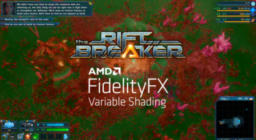
- the article compares several .obj parsers for loading speed and memory usage
- presents a comparison table of supported features
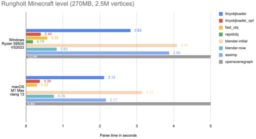
- the post presents a list of articles/papers that discusses Reservoir-based Spatio-Temporal Importance Resampling
- starts from the introduction of the technique, applications of the technique to issues
- a collection of techniques that improve upon the original technique
- additionally presents remarks about the limitations of the technique
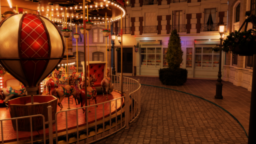
- the article expands the capabilities of the BVH construction to support a more significant number of instances
- discusses an improved algorithm for the efficient updating of BVHs
- it closes with a look at performance and the next steps
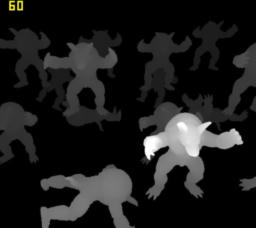
- the video shows a summary of block compressed formats and why they are a good fit for GPUs
- discusses the different formats, showing strengths and weaknesses of the different BC[1-7] variations
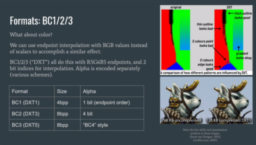
- the video lecture contains a detailed description of Vulkan Synchronization topics
- provides visual explanations of the different concepts to make understanding easier
- discusses limitations of binary semaphores and what timeline semaphores enable
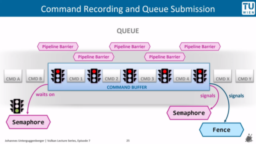
- the article describes a how a system can derive execution order from rendered resource dependencies
- presents how the dependencies create a graph that can then be analyzed and used for barrier placements, memory reuse
- shows how to express the API in Rust
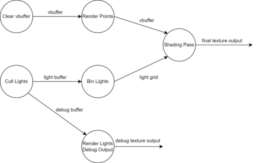
- the video tutorial explains the theory of toon shading and rim lighting effects
- presents how to implement the effect using OpenGL and GLSL
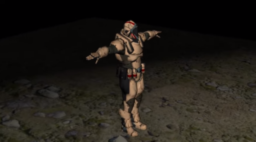
Thanks to Leonardo Etcheverry for support of this series.
Would you like to see your name here too? Become a Patreon of this series.